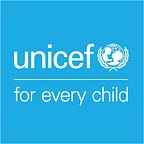An epidemic’s changing face
Early diagnosis, treatment, and care ensures long, healthy lives for those diagnosed with HIV.
In Malawi, nineteen years ago, Martha Jere was born with HIV. Then, a HIV diagnosis was practically a death sentence, especially for children in low income countries. Today, early diagnosis, treatment, and care ensure long, healthy lives. Now a mother herself, Martha has defied the odds and her son, Rahim Idriss, is part of Malawi’s AIDS-free generation.
AIDS is the leading cause of adolescent deaths in Africa, tripling since 2000. Like Martha, many have had HIV from the time they were babies — transmitted during pregnancy, delivery or breastfeeding — but did not receive life-saving treatment. Martha started treatment at age 11.
Married at 17, Martha thought of marriage as a way to become financially secure. Child marriage is common in sub-Saharan Africa. In Malawi, half of girls are married by the age of 18. In Bilimoni village, Martha lights a cooking fire in front of her home, Rahim strapped to her back.
As an adolescent living with HIV, Martha was part of a teen support group. When she became pregnant, she started receiving support from other mothers living with HIV. Her husband left not long after she had their son. In her yard, Martha pours water into a bucket to wash clothes.
Like many young mothers, Martha is no longer in school. She hopes to return, but for now she has a small laundry business. Martha raises Rahim independently, sharing a one-room house with her sister.
Martha is helping others by proudly living with HIV.
“I encourage other mothers I meet that even if they’re HIV-positive, it’s not the end of the world, they can still live a long life,” she says.
At home, Martha washes clothes, her son nearby.
Martha received simplified treatment — only one pill per day to prevent transmission of HIV from mother to child. A decade ago, less than 1% of pregnant and breastfeeding women living with HIV were receiving the best treatment available, now three in five are on antiretroviral treatment.
Six weeks after he was born, Rahim was tested for HIV for the first time. HIV progresses quickly in infants so testing early and receiving results quickly can be a matter of life and death. At the clinic, a healthcare worker greets Rahim.
Globally, less than half of HIV-exposed children are tested for HIV before they reach two months of age. Martha had to wait two months to receive the results of Rahim’s HIV test. It is not easy to live with uncertainty, but counseling helped Martha deal with the fear.
Martha knew staying on treatment and follow up testing was crucial while she breastfed Rahim to keep him healthy. Since 2000, programmes, like the one Martha was part of, have averted 1.3 million new HIV infections among children. A healthcare worker holds Rahim at the clinic.
“I was so excited, so happy he was not carrying the virus,” Martha recalls. “Rahim Idriss is 8 months old now and is growing healthy and strong,” says a clearly proud mother. “He is happy, friendly and feels comfortable with anybody.”
“I want the children of Malawi to be an HIV-free generation, that they would be educated about HIV contraction so that we can be a generation without HIV,” Martha says.
Learn more about UNICEF’s work in HIV/AIDS. #FightUnfair
